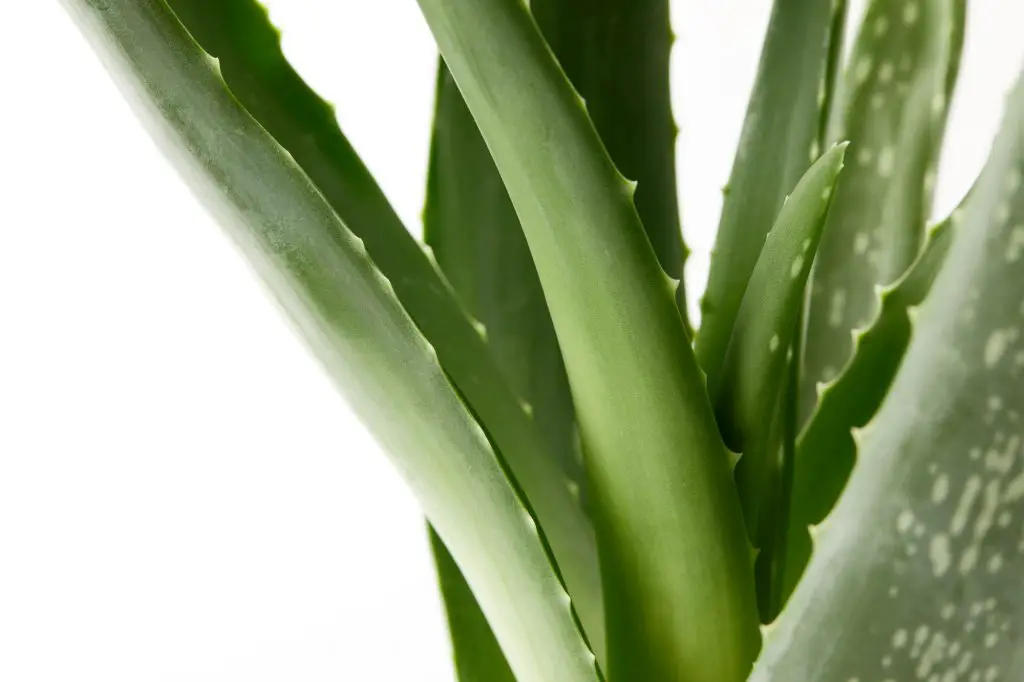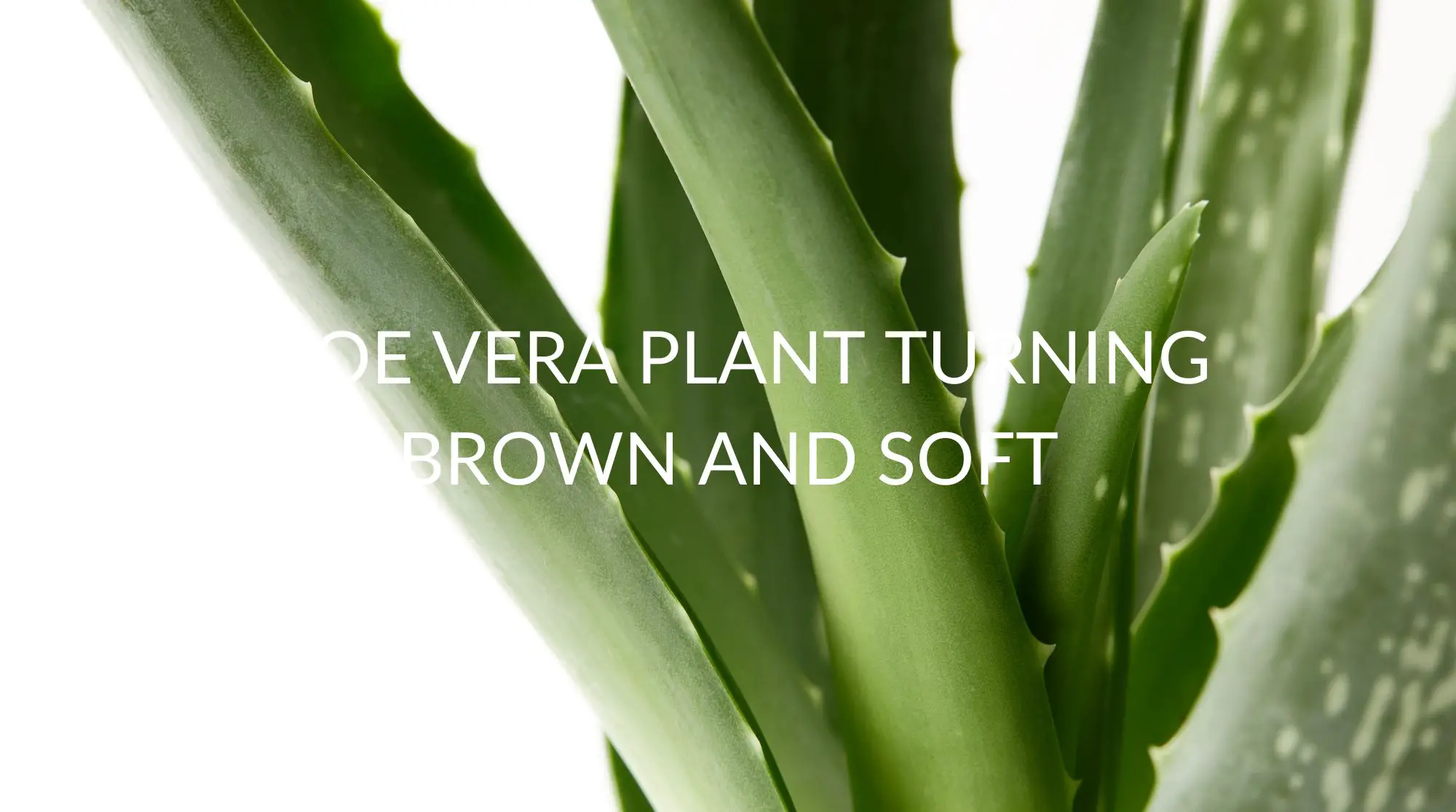The aloe vera plant is a beloved one for homes, as it serves medicinal purposes while also adding a breath of life to your home. However, if you notice your aloe vera plant turning brown and soft, don’t immediately throw it away; you may be able to save it.
Aloe plants will typically communicate a lack of proper growing conditions through the appearance of their leaves. Thus, if your aloe’s leaves are turning brown or changing texture, it’s a telltale sign that something’s wrong. Thankfully, there are ways to avoid any of these changes, so your beloved aloe vera plant doesn’t wither away.
Why Is My Aloe Plant Turning Brown?
A healthy aloe vera plant is supposed to be lush, vibrant green with a glossy finish. Any dullness or browning is a sign that something’s wrong. At first sight of browning leaves, try to diagnose and cure the issue to avoid losing the entire plant.
Too Much Water
The most likely culprit causing a browning aloe plant is overwatering. Aloe plants do not need to be watered every day, unlike many other plants. Aloe retains water pretty well, so it doesn’t need a lot. If you notice that just the tips of your aloe leaves are brown, that could actually be a sign that you’re giving it too little water.
Lack Of Sufficient Nutrients
Your aloe vera plant benefits from a small amount of fertilizer to keep it healthy. If the soil you choose already has fertilizer in it, don’t add any more. Otherwise, a small amount of fertilizer once a year is sufficient.
Too Much Sun
A little bit of sunlight is great for any plant, but too much isn’t a good thing for your aloe vera. Essentially, the browning is your plant’s attempt to protect itself from the ultraviolet rays of the sun. Aloe vera plants don’t like the heat, so you may have to move it away from the window a bit if it’s turning brown.
Too Much Salt
Salt in your soil is a good thing, but too much salt buildup within the soil of your aloe plant can deplete its ability to move nutrients around. It’s hard for this to happen, but it’s worth knowing in case other causes for browning don’t make sense.
Pesky Pests
If you notice brown spotting on your aloe’s leaves, some pests may have found their way into your plant. Depending on the type of pest, you should be able to wash them away. Make sure you isolate the aloe plant and remove any dead leaves with pests inside.
Your Aloe Is Sick
In some cases, your plant may have caught some type of disease that is causing it to brown and rot. These typically occur due to overwatering or pests. If you can, remove any brown leaves and change the soil to try and bring your aloe back to life.
Here are the reasons why the tips of your Aloe plant are drying out

Why Is My Aloe Plant Turning Soft?
The long leaves of an aloe plant are meant to be plump and should stick up somewhat straight. If you notice that they are soft or wilting, there are a few things that could be causing this that are easy to remedy.
Winter Is Coming
You’ll likely notice changes in the winter, regardless of if you grow your aloe indoors or outdoors. In winter, your aloe doesn’t need as much water. Thus, it’s easier to overwater it in the winter. You also want to ensure your aloe isn’t too close to a drafty window, as it might get chilled.
Aloe vera plants go dormant in the winter, which is how they rest and retain adequate nutrients to blossom back up in the spring.
Too Much Watering
Not only can too much water turn your aloe vera plant brown, but it can also make it go soft. Your plant is oversaturated, and the water has to go somewhere. You generally only need to water your aloe plant once a week at the most. Check the soil with your finger to see if it’s moist before adding water.
Aloe plants are similar to succulents in that they drink up water and conserve it for quite some time. This is because they were naturally grown in deserts, where water sources were scarce, so they had to adapt.
Insufficient Soil
If the soil you’ve chosen doesn’t have good drainage, it could cause the water to pool up in your aloe’s roots. Since the water has nowhere else to go, it’ll oversaturate your plant, causing the leaves to go soft. Soil that is made for succulents works well for aloe plants as the drainage is ideal.
Improper Pot Structure
Adequate draining is absolutely crucial for your aloe’s pot or container, regardless of the style you choose. If the water isn’t able to drain out of the pot when necessary, that water is going to pool into your plant and cause the plant to go soft, which will eventually cause your aloe to rot if it’s not dealt with.
If you’re worried that pots with drainage holes are going to make a mess on your counter, add a saucer below it to catch any excess water that is trying to make its way out of the pot.
The Pot Is Too Small
Aloe plants can grow quite large, meaning you’ll likely have to get bigger pots as it matures. If the pot is too small, roots may not be able to grow the way they need to so they can support the plant, causing leaves to go soft and droop.
Root Rot Is Spreading
As mentioned above, overwatering can cause the roots of your aloe to start rotting. Rot can spread through your plant pretty quickly, which will not only cause the leaves to go brown but will also cause them to go soft.
If you don’t prune your aloe as soon as you notice signs of rot, it can get harder and harder to salvage the leaves or roots that are still healthy. Cutting off any rotting, soft leaves and roots and repotting your aloe is the only way you can try to revive it.
How To Save An Aloe Vera Plant Turning Brown And Soft
Aloe vera plants are quite resilient. There are often several ways you can remedy an aloe plant that has gone soft or brown, so you don’t have to say goodbye to the plant. As soon as you catch signs of browning or softness, try one of the following tips.
Repot Your Aloe Vera
You can take your aloe vera plant out of its current pot and add it to new soil that drains better, mixed with some gritty substrate. This is an ideal combination to foster a healthy aloe vera plant. It’s always a good idea to start with repotting when you notice any browning or softness developing.
Change Your Aloe’s Pot Style
While terracotta and clay pots are gorgeous, they don’t always retain water very well. If you can’t seem to get your aloe looking healthy even when repotting in one of these pots, consider opting for a metal or plastic pot. You can still find aesthetically pleasing pots and containers in those materials.
That said, if you still want terracotta or clay, be sure you find a pot with sufficient drainage holes.
Check For Root Rot
If you choose to repot your aloe plant, be sure you check the roots thoroughly to see if there are any signs of rot. Remove anything that looks suspicious so nutrients aren’t wasted on roots that won’t sustain the rest of your plant. Just be careful not to damage any healthy roots in the process.
Give Your Aloe A Break From The Sun
Giving your aloe plant a break from the sun will allow it to stop browning in an attempt to avoid too much UV exposure. Having an aloe plant right at a window isn’t always the best idea because of the sun and the draft.
Once it’s ready for light again, make sure your aloe plant is exposed to light but doesn’t have sunlight shining directly on it. Slowly reacclimate your aloe plant to the sun by letting it sit in the sun for an hour at a time, slowly increasing the amount of time it gets sunlight until it’s able to get used to the light again.
Acclimate Your Aloe Plant To The Right Temperature
Your aloe vera plant is happiest when in warm temperatures. You may have to acclimate your aloe plant indoors or outdoors, depending on the weather and the overall temperature of your home.
How To Prevent Browning Of Aloe Vera Plant Leaves
If you have a fairly new aloe vera plant that is currently in good condition, you can easily avoid having to deal with any brown leaves or signs of illness in your plant.
Use Proper Watering Techniques
Who knew watering plants could be so complicated? Most plants have their own preferences of how they like to receive water in order to maximize how it spreads throughout the plant. Aloe plants want their soil watered. You should never pour water onto the aloe vera leaves.
Reach for a watering can that has a long, narrow spout to make sure you can direct the water as precisely as possible. You should be watering the soil and not the plant itself.
Choose The Best Soil
A nutrient-dense soil mixed with some sand or other gritty-textured substrate is the ideal mixture for a healthy aloe vera plant. The substrate is going to make sure the roots of your aloe vera plant don’t drown in too much water. While you want the soil rich in proper nutrients and minerals, you also want soil that drains well.
Add Nutritious Fertilizer To The Soil
Opt for a fertilizer that has nutritional value, such as earthworm humus. This will make sure your aloe gets exactly what it needs to stay healthy and green. The best practice is to add some fertilizer in the spring, only once, as this will be sufficient enough for your aloe to consume throughout the year.
Choose The Right Pot
You absolutely need to choose a pot that has a decent drainage system. It’s very easy to find cute pots and plant containers that have the right drainage but also add beauty to your shelves or counters. The pot should also be spacious in terms of width, and it should be fairly shallow.
Propagate Healthy Leaves
If your aloe vera plant seems to have a lot of rot, or the browning and softness have spread pretty far, you might want to propagate the healthy leaves that you can salvage and plant them in new soil. You shouldn’t have to do this unless the plant has been neglected.
Choose The Right Spot
Your aloe plant should live in a room that remains fairly stable in temperature, between 55 and 60 degrees Fahrenheit if possible. Conditions should remain warm, and there shouldn’t be any drafts, airflow from fans or air conditioners, and the plant should not sit right in the window.
In order for your aloe to get appropriate sun, consider having it face the window on the opposite side of the room. Your aloe doesn’t need to remain in light all day, but it does need some in order to thrive.
Recap
An aloe vera plant is a generally easygoing plant to take care of, making it a favorite of many plant lovers. That said, there are certain parameters to keep your aloe within. Improper watering techniques are typically the main cause of an aloe vera plant turning brown and soft, which is very easy to either prevent or change depending on the state of your aloe plant.
Listen to your aloe plant to determine its water needs, and make sure its pot has the ability to drain well. Give it a little bit of indirect sunlight, and let it soak in the rays and the water on its own, and your aloe will be happy and healthy for a long time to come.








